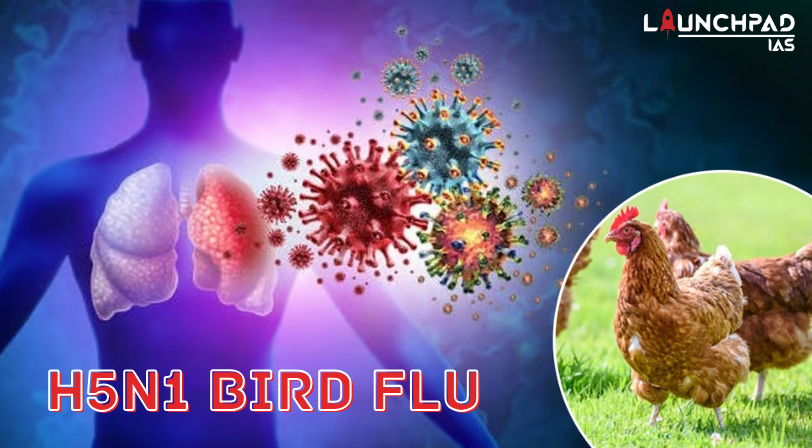About
- Avian influenza or H5N1 Bird Flu refers to the disease caused by infection with avian influenza Type A viruses.
- Infrequently, the virus can infect mammals from birds, a phenomenon called spillover, and rarely can spread between mammals.
- H5N1, a subtype of avian influenza, has the potential to infect other mammals such as minks, ferrets, seals, domestic cats, and others through contact with infected birds, their faeces, or infected bird carcasses.
Symptoms in Humans
- Range from mild to severe influenza-like illnesses such as fever, cough, sore throat, muscle aches, nausea, abdominal pain, diarrhea, and vomiting.
- People can also develop severe respiratory illness (e.g., difficulty breathing, pneumonia, acute respiratory distress, viral pneumonia) and altered mental status, seizures, etc.
Avian Influenza in India
- In 2019, India was declared free from Avian Influenza (H5N1), which has also been notified to the World Organization for Animal Health (OIE).
- However, in December 2020 and early 2021, outbreaks of avian influenza H5N1 and H5N8 were reported in poultry in 15 states in India.
- In 2024, the WHO warned about rising cases of bird flu in other species including humans.
Treatment
Evidence suggests that some antiviral drugs can reduce the duration of viral replication and improve prospects of survival, however, ongoing clinical studies are needed.
Concerns
The widespread H5N1 Bird Flu outbreaks have a substantial economic impact, resulting in significant losses to the poultry industry and threatening food and vaccine security, apart from raising animal welfare and environmental concerns.
Types of Influenza Virus
- There are four types of influenza viruses: influenza A, B, C, and D
- Influenza A and B are the two types of influenza that cause epidemic seasonal infections nearly every year.
- Influenza C mainly occurs in humans but has been known to also occur in dogs and pigs.
- Influenza D is found mainly in cattle. It’s not known to infect or cause illness in humans yet.
Avian influenza Type A Viruses
- Type A viruses are classified based on two proteins on their surfaces – Hemagglutinin (HA) and Neuraminidase (NA). There are about 18 HA subtypes and 11 NA subtypes.
- Several combinations of these two proteins are possible e.g., H5N1, H7N2, H9N6, H17N10, H18N11, etc.
- All known subtypes of influenza A viruses can infect birds, except subtypes H17N10 and H18N11, which have only been found in bats.



